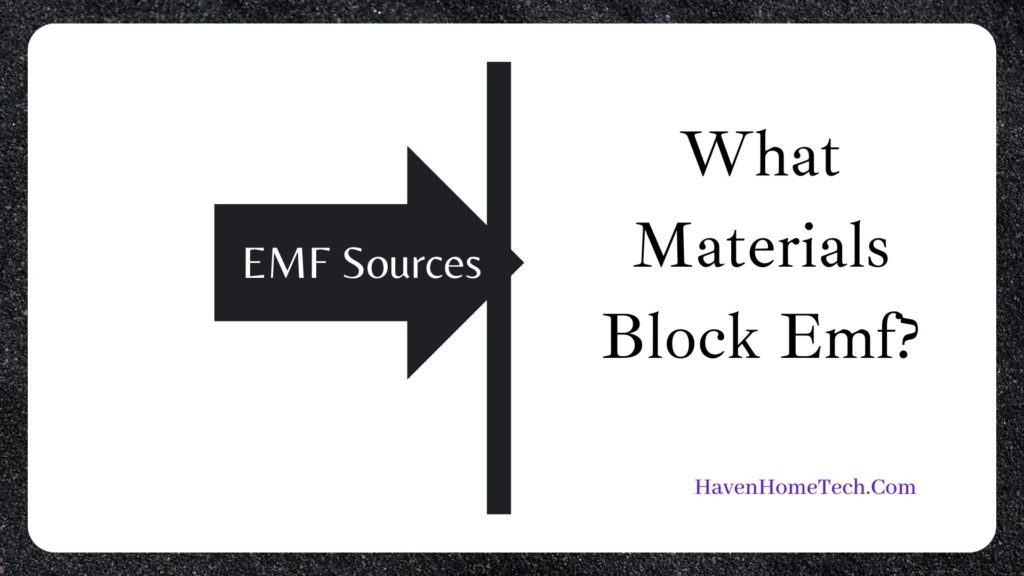Electromagnetic frequencies are referred to as EMF. This is the band of frequencies that electromagnetic waves like radio waves, microwaves, and infrared radiation use to travel through the air.
These waves are a component of the spectrum that also includes the visible natural light. However, the several other kinds of electromagnetic frequencies that are all around us, like EMFs, cannot yet be seen or felt.
EMFs are everywhere!
They are present in almost all of the devices we use, including microwaves, phones, TVs, smart meters and internet routers. Additionally, we are exposed to EMFs from both natural sources, like the sun and man-made sources such as power lines.
However, despite just how common EMFs are in our life, they have also been connected to a number of health problems.

These include migraines, exhaustion, sleeplessness, sadness, anxiety, and other issues. There are some worries that chronic exposure to EMFs might result in cancer or other severe health issues.
Is there anything that can prevent EMFs, then? There are a few things to take in mind while examining this topic, but the simple answer is yes.
First, remember that there is no substance that can entirely block EMFs. Since EMFs are essentially airborne invisible particles, nothing can entirely block them. However, certain materials can weaken or absorb a portion of the EMF’s energy.
Second, it’s crucial to remember that different materials may block certain EMF kinds. For instance, certain materials may be more effective at preventing radio waves than others at blocking microwave radiation. Before selecting a material, it’s critical to understand the sort of EMF you’re attempting to prevent.
Last but not least, it’s crucial to be sure the material you select is reliable and secure. Some materials may even enhance your exposure to EMFs or pose additional risks to your health. Let’s examine several materials that are frequently used to block EMFs with that in mind.
| Materials that Block EMF | A Brief Description of the Material |
|---|---|
| 1. Copper | Copper is thought by many to be a good EMF blocker. Due to its excellent electrical conductivity, copper can collect and refocus EMF radiation. Although copper can assist some EMFs be reduced, it is not always as efficient as other materials, especially for high-frequency EMFs like microwaves. |
| 2. Carbon | Because of its capacity to suppress EMFs, carbon is a more recent substance that is gaining popularity. For the purpose of creating a conductive barrier against EMFs, carbon is injected into a variety of materials, including textiles. To inhibit EMFs, carbon is also used with paint, varnish, and plaster. Low-frequency EMFs like radio waves can be effectively blocked by carbon shields. |
| 3. Mylar | A polyester covering called Mylar has been found to filter certain EMFs. It may be bought in big rolls or sheets and is frequently used in insulation and packaging. Radiofrequency (RF) radiation, the kind of EMF released by WiFi routers, cellphones, and other wireless devices, is particularly well-blocked by mylar. |
| 4. Aluminum Foil | Another substance that is frequently used to suppress EMFs is aluminum foil. Aluminum is a good conductor of electricity and can deflect and absorb EMF radiation, just like copper. However, compared to low-frequency EMFs like radio waves, aluminum foil is more effective in blocking high-frequency EMFs like microwaves. |
Quick Navigation in this Resource
EMF Blocking Clothing
EMF shielding products have become more and more common. Silver and other metals, like copper or nickel, are used to create clothing that serves as a Faraday cage.
A conductive enclosure called a faraday cage is used to block electromagnetic radiation. These metallic materials produce a barrier that really dissipates EMFs.
As a result, RF radiation is effectively blocked by EMF blocking clothes.
Conductive Fabrics
Another common material for blocking EMFs is conductive textiles. Silver, nickel, copper, or metals such as stainless steel are frequently used to create these textiles.
They have been put through testing and have been shown to block a variety of EMFs. Conductive fabrics are frequently used in infant products including baby blankets as well as curtains, draperies, canopies, and sleeping tents.
A good example is the emf blocking bed canopies.
Glass (Low-E Glass)
Low emissivity glass, commonly referred to as low E-glass, is a form of window glass made expressly to reflect radiation from the sun, wireless devices, and other sources in order to block EMFs.
This material is appropriate for use in windows, doors, partitions, and dividers in both the home and the workplace.
In conclusion, it is evident that there are several materials that can aid in reducing and absorbing EMFs even if there is no ideal way to entirely block EMFs.
The secret is to select the appropriate material for the particular circumstance and to make sure that the material is both secure and efficient.
We can do this to restrict our exposure to EMFs and maybe reduce the related health risks.